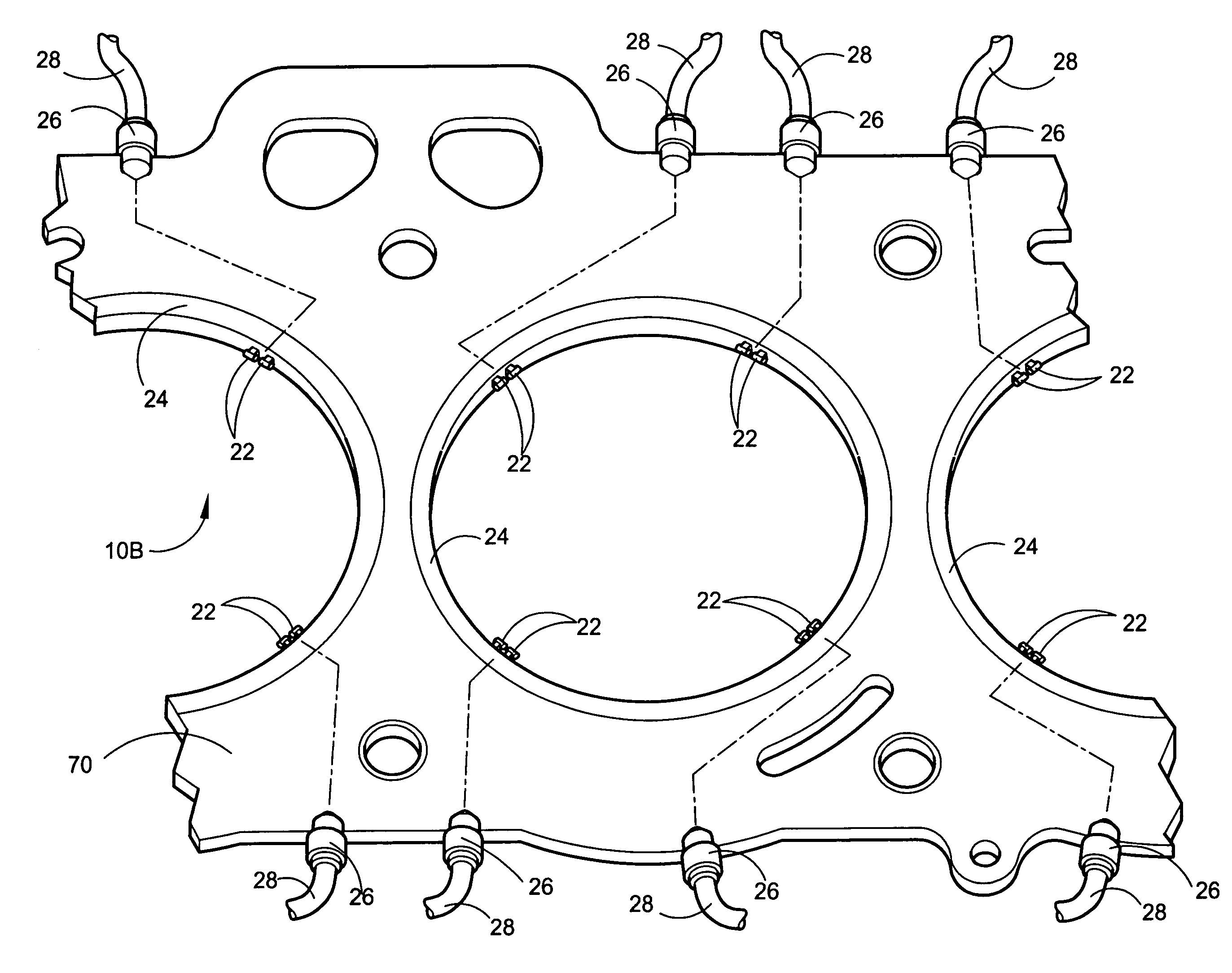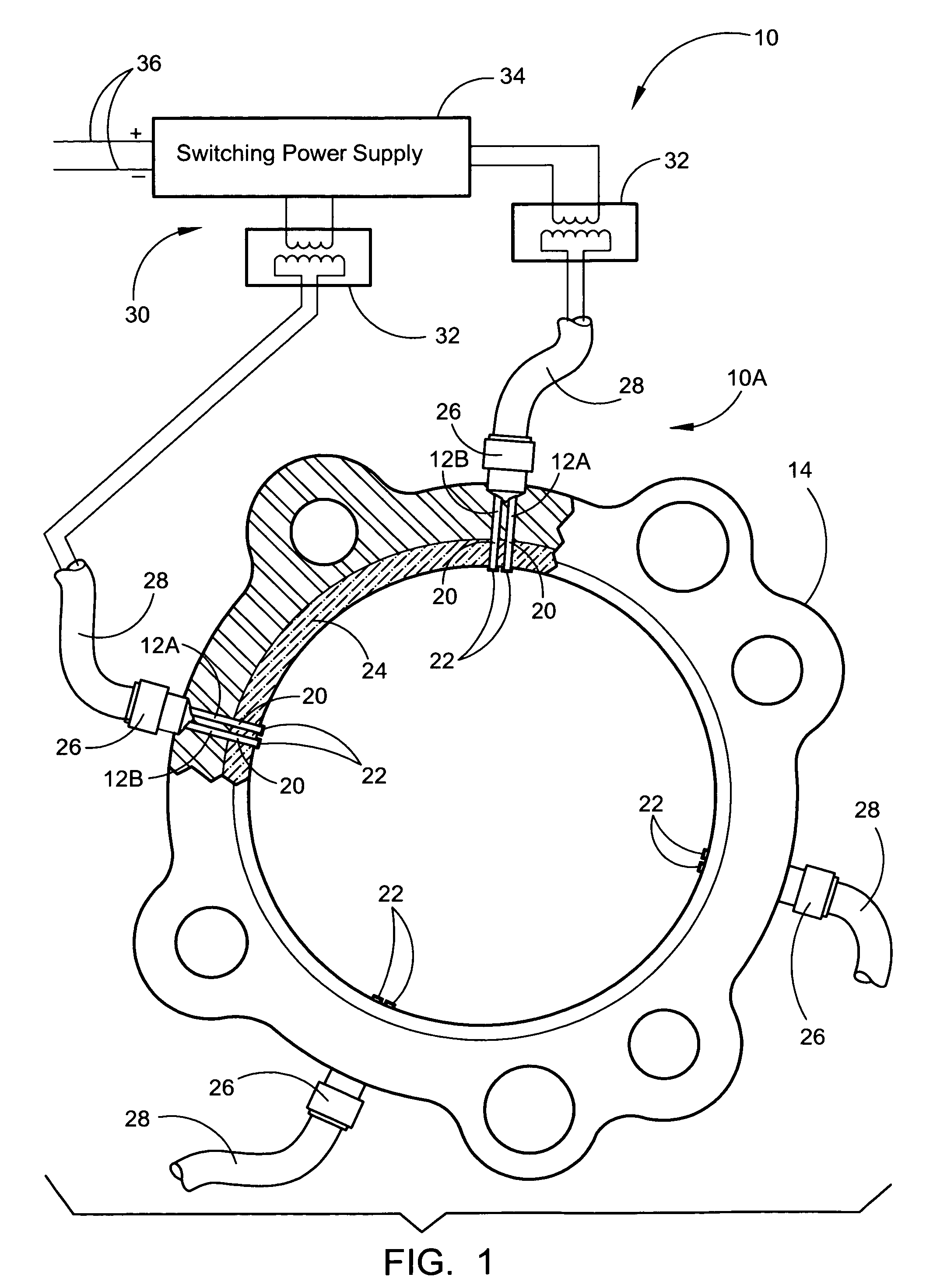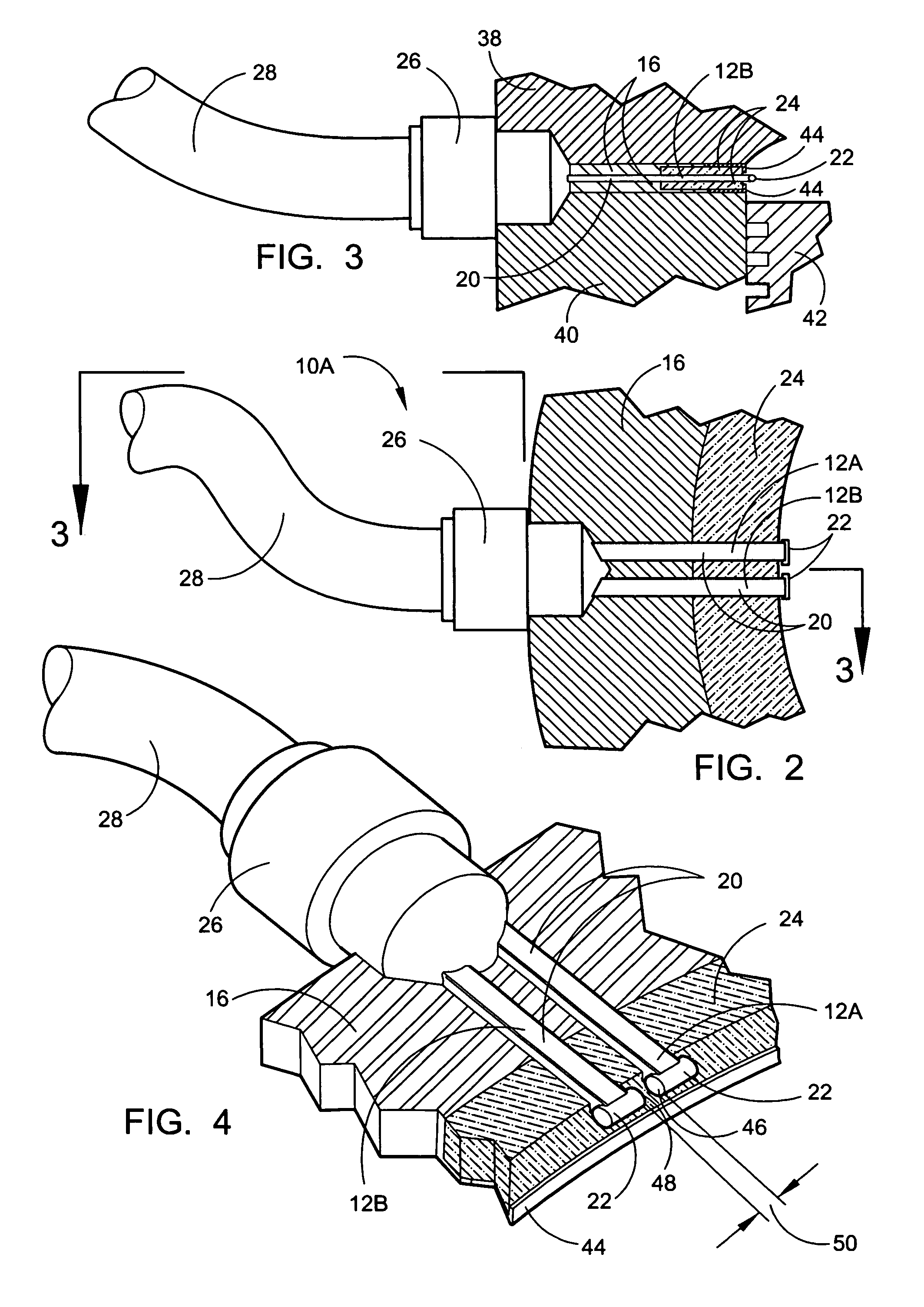Embedded igniter system for internal combustion engines
a technology of internal combustion engine and igniter, which is applied in the direction of engine ignition, machines/engines, and combustion explosion, can solve the problems of inability to endure the heat range associated with the inability of the spark electrode to be exposed to the chamber, and the undesirable effect of the thickness of the metallic plate on the area of the combustion chamber, so as to reduce the octane fuel requirements of internal combustion engines, eliminate the homogeneity, and eliminate the effect of the auto
- Summary
- Abstract
- Description
- Claims
- Application Information
AI Technical Summary
Benefits of technology
Problems solved by technology
Method used
Image
Examples
Embodiment Construction
[0054]Referring now to the drawings, wherein similar parts of the embedded igniter system 10 for internal combustion engines are identified by like reference numerals, there is seen in FIG. 1 four pairs of embedded igniters 12 embedded into a single cylinder head gasket 14. The cylinder head gasket 14 is composed of layers of dielectric polyamide materials 16 and carbon fiber materials 18. The primary igniter 12A and the secondary igniter 12B consist of rectangular tantalum bars 20 with iridium electrode pins 22 at the ends encased in an alumina ceramic insulation housing 24. The rectangular shape of the tantalum bar 20 insures a means that they will not rotate within the alumina ceramic insulation housing 24 although a variety of other geometric shapes will insure the anti-rotation feature, including square, and they all will be covered within the scope of this patent.
[0055]In the simplest embodiment of the embedded igniter system 10A depicted in FIG. 1, the tantalum bars 20 are di...
PUM
 Login to View More
Login to View More Abstract
Description
Claims
Application Information
 Login to View More
Login to View More - R&D
- Intellectual Property
- Life Sciences
- Materials
- Tech Scout
- Unparalleled Data Quality
- Higher Quality Content
- 60% Fewer Hallucinations
Browse by: Latest US Patents, China's latest patents, Technical Efficacy Thesaurus, Application Domain, Technology Topic, Popular Technical Reports.
© 2025 PatSnap. All rights reserved.Legal|Privacy policy|Modern Slavery Act Transparency Statement|Sitemap|About US| Contact US: help@patsnap.com



